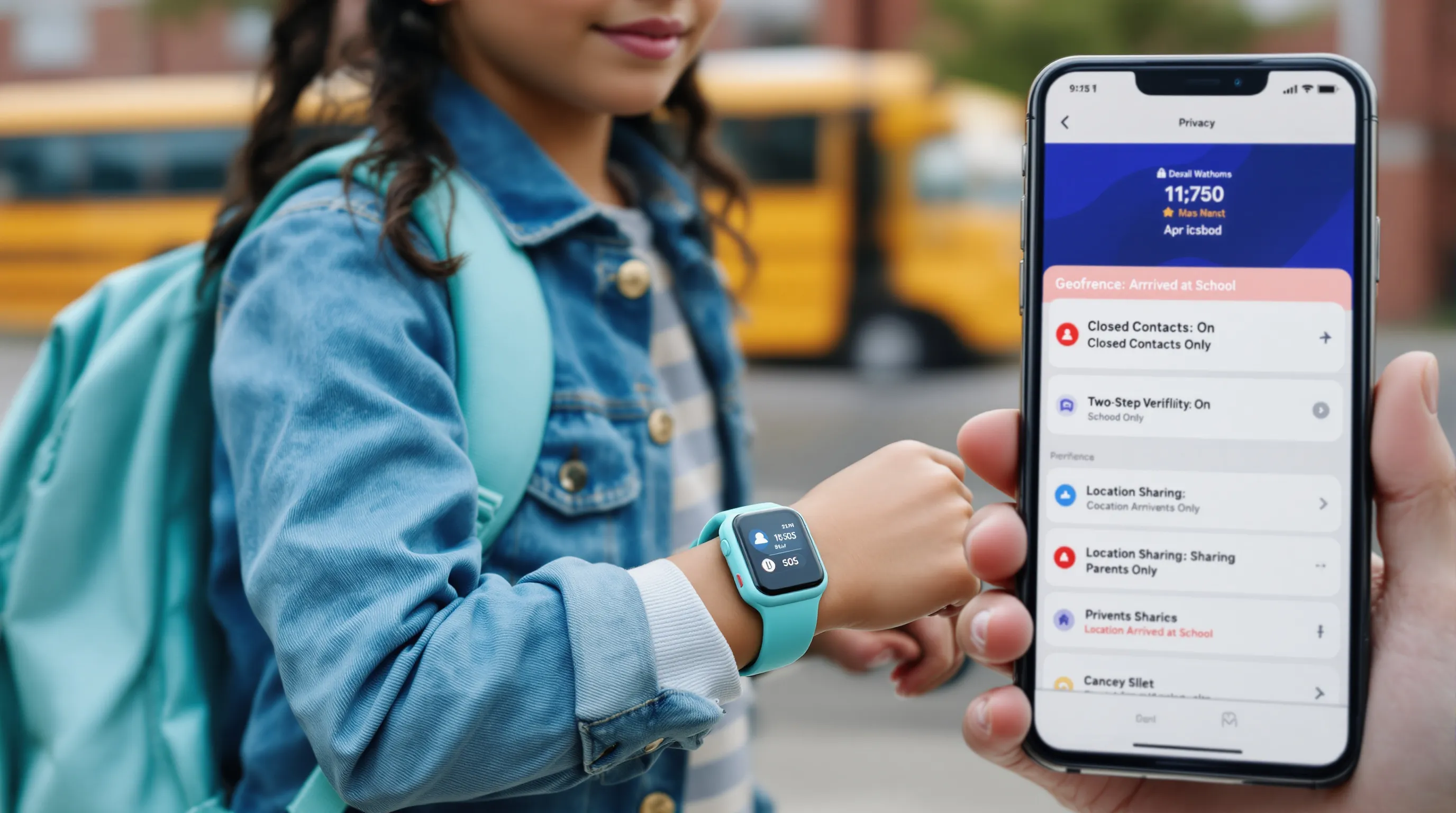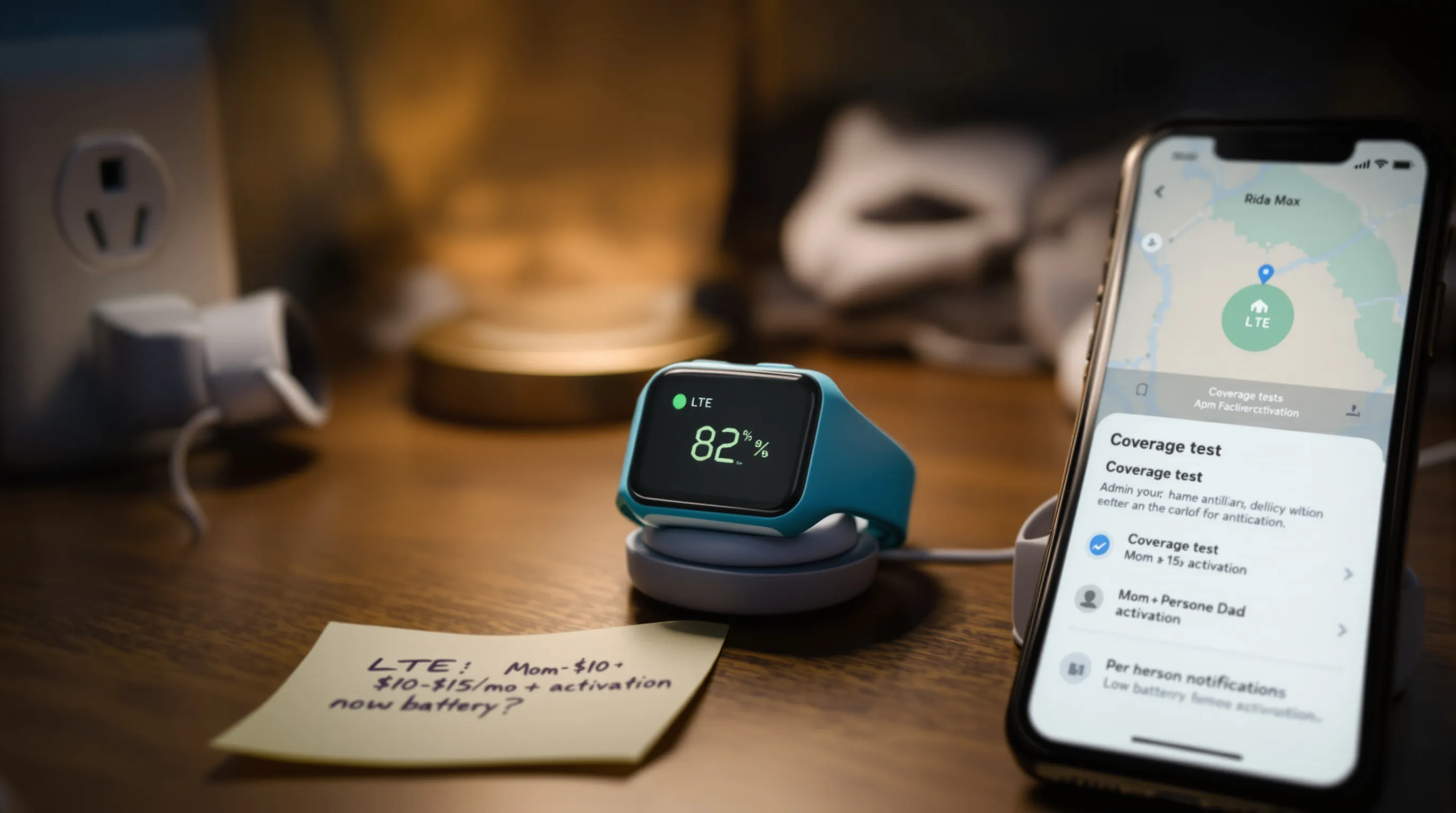If you’re shopping for a child safety GPS tracker smartwatch, you’re probably balancing two things: keeping tabs without becoming a helicopter. The good news: today’s kids’ smartwatches blend real-time location, simple calling, and emergency tools in one small wrist device. After living with several models on school runs, park playdates, and a weekend field trip, here’s the clear, no‑fluff guide from SmartWatches.org to help you pick the right watch, and set it up the right way.
Why A GPS Smartwatch For Kids?
Peace-Of-Mind Location Tracking
A kid’s GPS watch gives you live location updates, a location history you can scroll through, and geofencing alerts when your child enters or leaves set zones like home, school, or soccer practice. In the real world that looks like this: you get a ping that your 8‑year‑old arrived at school at 7:53 a.m., and if they stop at a friend’s house after the bus ride, you’ll see it in the timeline. The best part is how invisible it feels to kids, no pocketing a phone, no forgetting to charge a separate tracker.
Call, Text, And SOS, When You Need It
Most child safety GPS tracker smartwatch models allow calls and messages only with parent‑approved contacts. That keeps random numbers out and makes communication simple: you, your partner, and maybe grandma. An SOS button is standard and worth testing on day one. One long press can send an alert with the live location, and some models can also call a designated number or emergency services, depending on settings. It’s the fastest way for a child to say “I need help“ without navigating menus.
How Tracking And Connectivity Work

GPS, Wi‑Fi, And Cellular: What Each Signal Does
GPS is the backbone for outdoor positioning, it’s most accurate when your child is under open sky. Indoors, watches lean on nearby Wi‑Fi networks (not to connect to the internet, but to compare known network IDs against a database) to refine the dot on the map. Cellular data does two jobs: it ferries all those location updates to your phone in real time and enables calling and messaging. In short: GPS finds, Wi‑Fi refines, cellular delivers.
Accuracy, Delays, And Battery Trade-Offs
You can usually pick the update frequency in the app. Faster refresh (say, every 1–2 minutes) feels great on a busy field trip day, but expect more battery drain. Slower intervals or “smart” mode stretch battery life and are fine for typical school days. Budget trackers sometimes use low‑power protocols that extend runtime but send fewer updates, useful for kids who don’t need constant tracking. It’s also normal to see brief delays when the watch is jumping between GPS and Wi‑Fi indoors: the map will catch up within a minute or two.
Safety, Privacy, And Parental Controls

SOS, Geofencing, And School Mode
These three features form the safety core. SOS gives your child a single, clear action in a stressful moment. Geofencing keeps you in the loop for arrivals and departures without you checking a map all day. School Mode limits distractions by disabling games and non‑essential features during class, so your kid’s watch isn’t the reason the teacher gives side‑eye.
App Security, Data Sharing, And Permissions
Stick with brands that use closed contact lists, require explicit permission to add friends or features, and offer app PINs or two‑step verification. Check what’s shared and with whom: location data should only be visible to guardians you authorize. Before you hand over the watch, open the app’s privacy settings and toggle off anything you don’t need, no reason for a third‑party ad network to know when your child leaves math club.
Locks, PINs, And Tamper Alerts
A good kids’ watch supports on‑device PIN locks and sends a notification if the strap is opened or the watch is powered off. If your child is curious (or has a sibling who is), you’ll appreciate the tamper alert popping up on your phone. Pro tip: set the PIN together and explain why it matters, kids respect rules they understand.
Costs, Compatibility, And Battery Life

LTE Plans, Fees, And Coverage Gaps
Most child safety GPS tracker smart watch models need a cellular plan. Expect around $10–$15/month for LTE/4G service, with possible activation fees depending on the carrier. Coverage is the wildcard: cities and suburbs are usually fine, but remote or rural areas can see dead zones. If your neighborhood is on the edge of a coverage map, test during the return window.
iOS And Android App Support
Nearly all mainstream kids’ watches offer companion apps for both iOS and Android. We’ve set them up on iPhones and Android phones interchangeably without drama. If multiple caregivers are involved, confirm the app supports more than one admin and that notifications can be customized per person.
Charging Habits And Expected Runtime
Battery life swings with usage. With frequent updates and calling, expect daily charging. With moderate use, two days is common: some budget trackers in low‑power modes can push multiple days or even weeks if you rarely request live updates. Make charging part of the bedtime routine and you’ll rarely run into a dead watch on the way to school.
Our Picks And How To Choose
Best Overall For Everyday Safety
Garmin Bounce and TickTalk 5 are our go‑to recommendations for most families. Bounce nails the basics: reliable location, simple communication, and a no‑nonsense app. TickTalk 5 adds robust calling and video options with tight parental controls. Both support geofences, SOS, and school mode, and both felt durable during a week of playground abuse. Choose Bounce if you want straightforward and sporty: choose TickTalk if you value richer communication tools.
Best Budget Pick For Younger Kids
Tack GPS Plus and Gabb Watch 3e deliver core safety without extras that drive up cost. Tack focuses on tracking and long battery life with lightweight hardware, great for smaller wrists. Gabb 3e keeps calling/texting limited to approved contacts and avoids app stores that can distract. If you’re testing the waters with a first smartwatch, these two keep costs down while covering the essentials.
Best For Older Kids And Independence
Bark Watch and Verizon Gizmo cater to kids who start roaming a bit more. Bark layers in strong monitoring and content‑aware controls (if you choose to use them), while Gizmo offers reliable LTE connectivity and a mature contact system. Both give parents solid oversight without feeling babyish on a middle‑schooler‘s wrist.
Setup And Daily Use Tips
Fast Setup, Safety Rules, And Boundaries
Before first wear: add approved contacts, set home/school geofences, enable SOS, and choose school hours. Then sit with your child and walk through how to call you, what SOS is for, and what’s off‑limits. Involving them now reduces “just pressing buttons“ later.
Tuning Alerts To Reduce Noise
Start slightly conservative, geofences that match real boundaries and location updates every 5–10 minutes. If you’re getting false arrival/exit pings (common near big buildings), widen the geofence radius or switch to “smart” update mode. The goal is calm, actionable alerts, not a phone that buzzes every block.
Teaching Kids Good Tech Habits
Explain in plain terms: the watch helps adults keep them safe, not spy on them. Agree on when they can call or send voice notes, and who’s allowed in the contact list. Review the location timeline together once, kids usually find it cool, and talk about privacy basics: don’t share your watch number with strangers: tell a teacher if something feels off.
Conclusion
A child safety GPS tracker smart watch can be a quiet guardian, there when you need it, invisible when you don’t. Focus on the big three: reliable location, clean parental controls, and an SOS that’s easy to trigger. Match the device to your child’s age and independence, keep alerts sane, and make privacy part of the conversation from day one. If you want a starting point, Garmin Bounce and TickTalk 5 are excellent. For budget, look at Tack GPS Plus or Gabb Watch 3e. And if your kid’s stretching their wings, Bark Watch or Verizon Gizmo will keep you connected without tethering them. We test so you can breathe easier, see our full reviews at SmartWatches.org.
